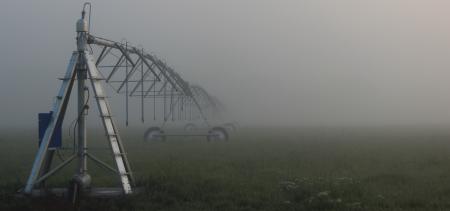Pre Harvest Agricultural Water Rule Finalized
Pre Harvest Ag Water Rule
On May 2, 2024 the FDA finalized a revision to Subpart E of the Produce Safety Rule to change the pre-harvest agricultural water requirement for covered produce (other than sprouts).
It replaced the pre-harvest microbial quality criteria and testing requirements with a systems-based pre-harvest agricultural water assessment. These assessments would be used to identify conditions that are reasonably likely to introduce known or reasonably foreseeable hazards into or onto produce or food contact surfaces, and determine if any, corrective or mitigation measures are needed.
At this time, the FDA will not be changing the requirements for harvest or post-harvest use of agricultural water or the agricultural water requirements for sprouts.
There is the requirement that a supervisor must review the written pre-harvest agricultural water assessment on a yearly basis.
What is Agricultural Water?
Agricultural water is water that will be in direct contact with the harvestable portion of the crop. The harvestable portion is considered at the flowering stage in the production cycle. It must be safe and of adequate sanitary quality for its intended use.
2024 Ag Water Town Hall
Ag Water Town Hall
Harvest and Post Harvest Water enforcement discretion has ended for both large and small farms in 2024. CDA's Produce Safety Program held a Town Hall meeting to discuss what this rule change will means for Colorado's farmers.
View the recording of this and other ag water videos on the CDA YouTube channel.
- Water Systems
- Location and nature of the water source (groundwater, surface water, etc)
- Type of water distribution system (open or closed to the environment)
- How the system is protected from possible sources of contamination
- Other users of water system
- Animal impacts (grazing, working or animal intrusion)
- Adjacent land use, application of biological soil amendments of animal origin (BSAAO), untreated or improperly treated human waste
- Practices
- Application method (overhead sprinkler, drip irrigation, farrow etc)
- Time of last application of agricultural water and harvest of the covered produce
- Crop Characteristics
- The surface adhesion of produce or internalization of hazards (tomato vs cantaloupe)
- Environmental conditions
- Heavy rain or extreme weather events and their frequency and impact on water system
- Air temperature, UV exposure
- Other Relevant Factors
- If applicable, test results
- If applicable, test results
When finalized, covered farms may need to implement corrective or mitigation measures based on the outcomes of their pre-harvest agricultural water assessments.
| If you determine: | Then you must: |
| Your agricultural water is not safe or of not adequate sanitary quality for its intended use | Immediately discontinue use and take corrective measures before resuming use of the water |
| There is a known or reasonably foreseeable hazard related to animal activity, BSAAOs, untreated or improperly treated human waste for which mitigation is reasonably necessary | Implement mitigation measures promptly, and no later than the same growing season |
| There is a known or reasonably foreseeable hazard not related to animal activity, BSAAOs, untreated or improperly treated human waste for which mitigation is reasonably necessary | Implement mitigation measures as soon as practicable and no later than the following year or test water as part of the assessment, and implement measures if needed based on outcome of assessment |
| There are no known or reasonably foreseeable hazard for which mitigation is reasonably necessary | Inspect and adequately maintain your water system(s) at least once each year |
Covered farms could be exempt from conducting a pre-harvest agricultural water assessment if they can demonstrate that their pre-harvest agricultural water:
- Meets requirements that apply for harvest and post-harvest agricultural water (microbial quality criterion and testing requirements, prohibition of untreated surface water and if applicable, the testing requirements for untreated ground water)
- Receive from a public water system or supply that meets requirement established in the rule
- Farm has public water system results or certificates of compliance demonstrating that the water meets relevant requirements
- Agricultural water is treated in accordance with the standards outlined in the Produce Safety Rule
- Reasonably likely that the quality of the water will not change prior to the use of the agricultural water (how the water is held, stored or conveyed)
FDA established the following compliance dates for the pre-harvest agricultural water requirements for covered produce other than sprouts:
- April 5, 2027, for Very Small Farms
- April 6, 2026 for Small Farms
- April 7, 2025 for Large Farms
There will be enforcement discretion for the harvest and post-harvest agricultural water requirements of the Produce Safety regulation until the following dates:
- January 26, 2025, for Very small farms
- January 26, 2024, for Small farms
- January 26, 2023, for Large farms
